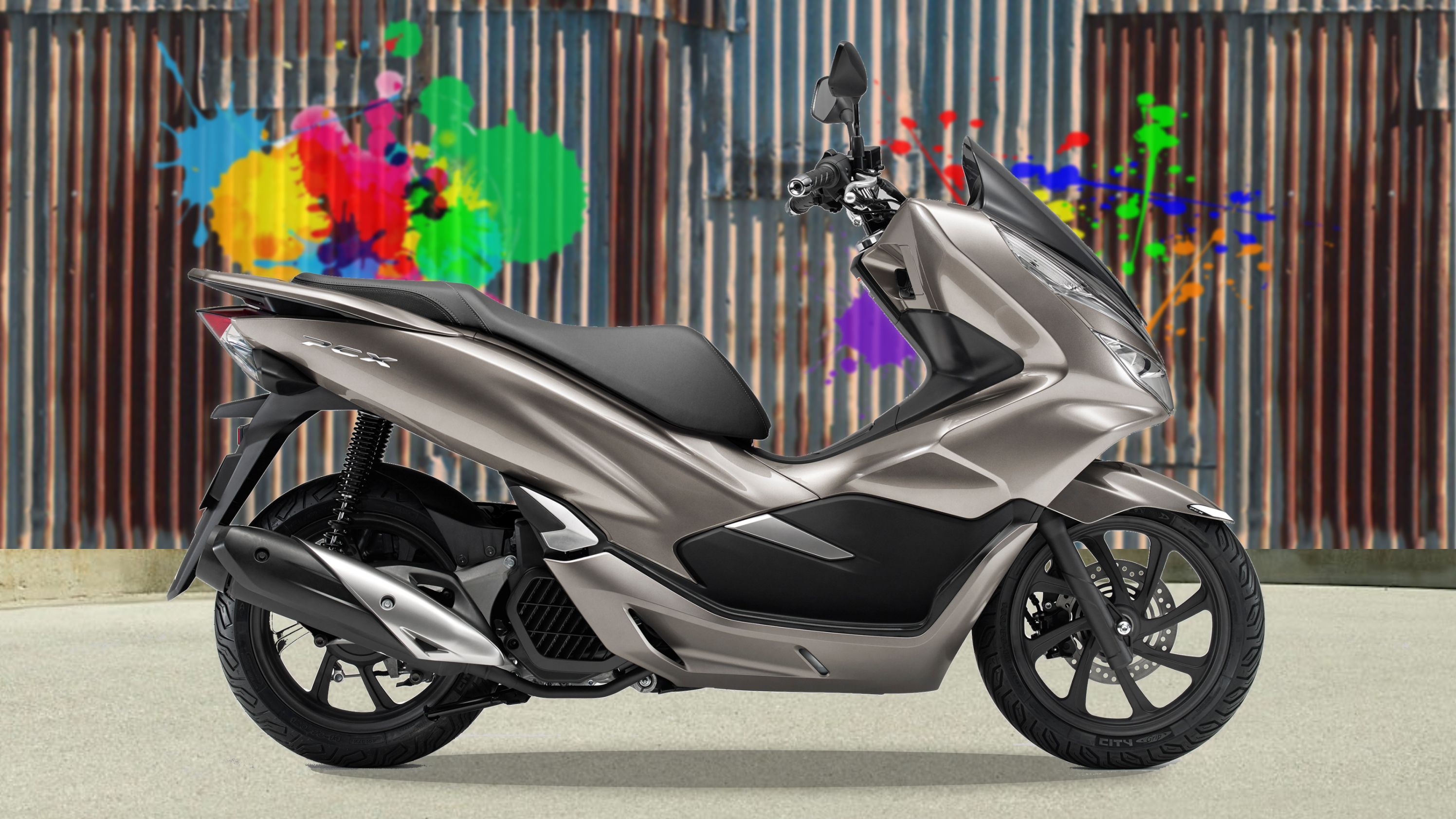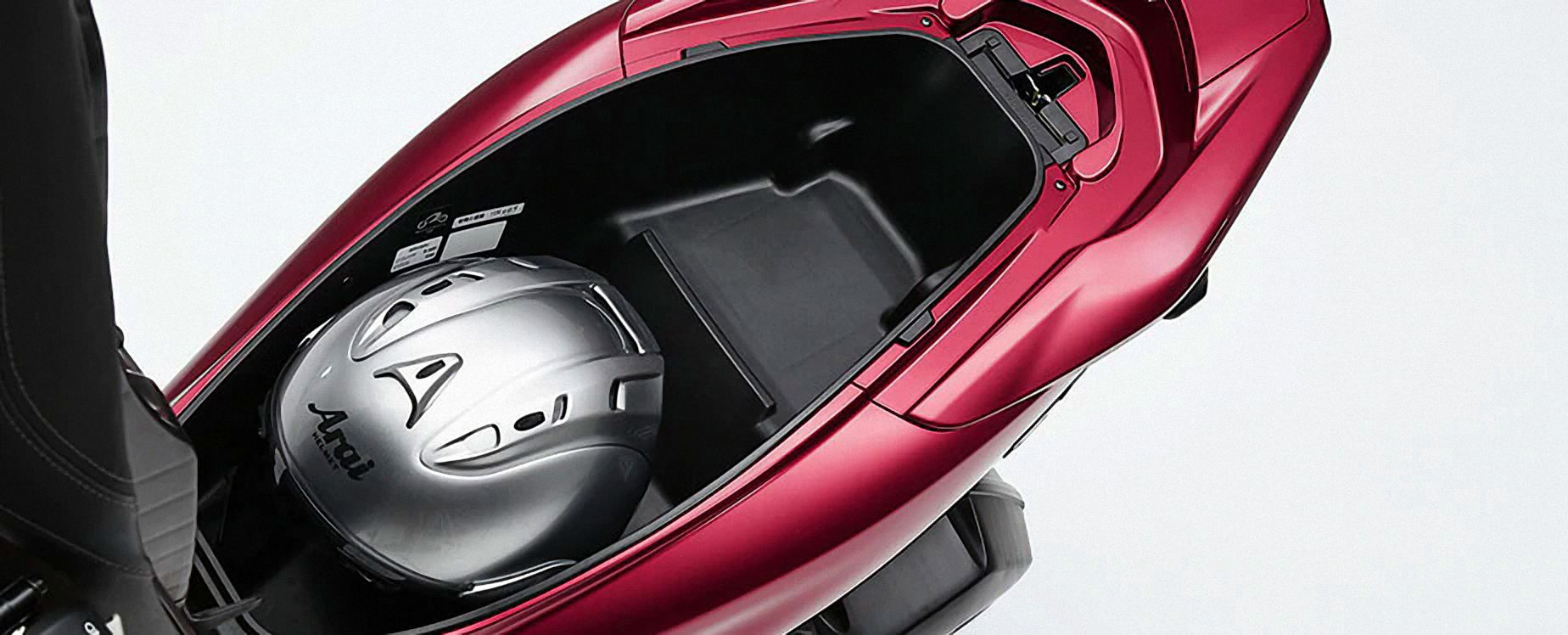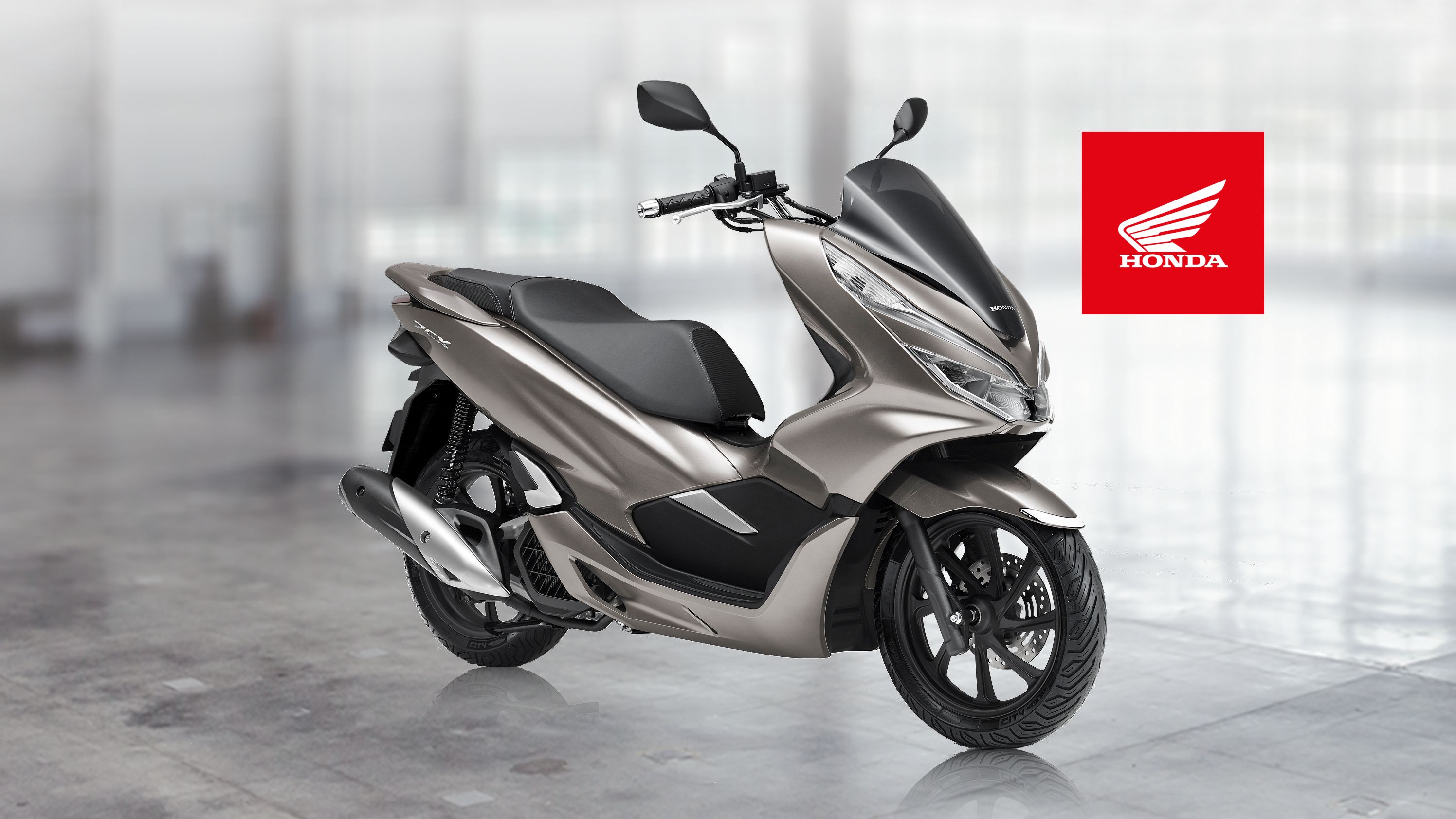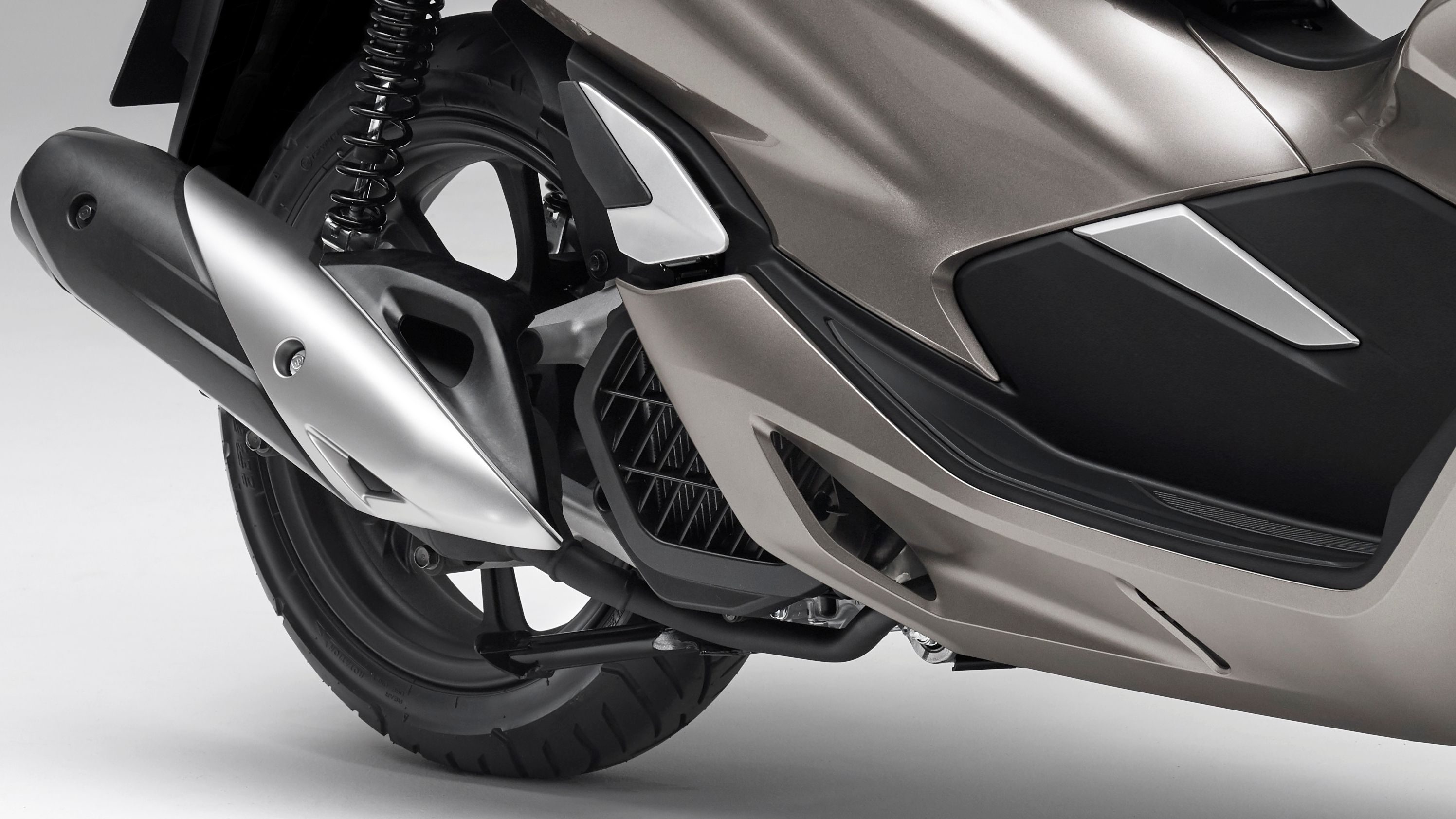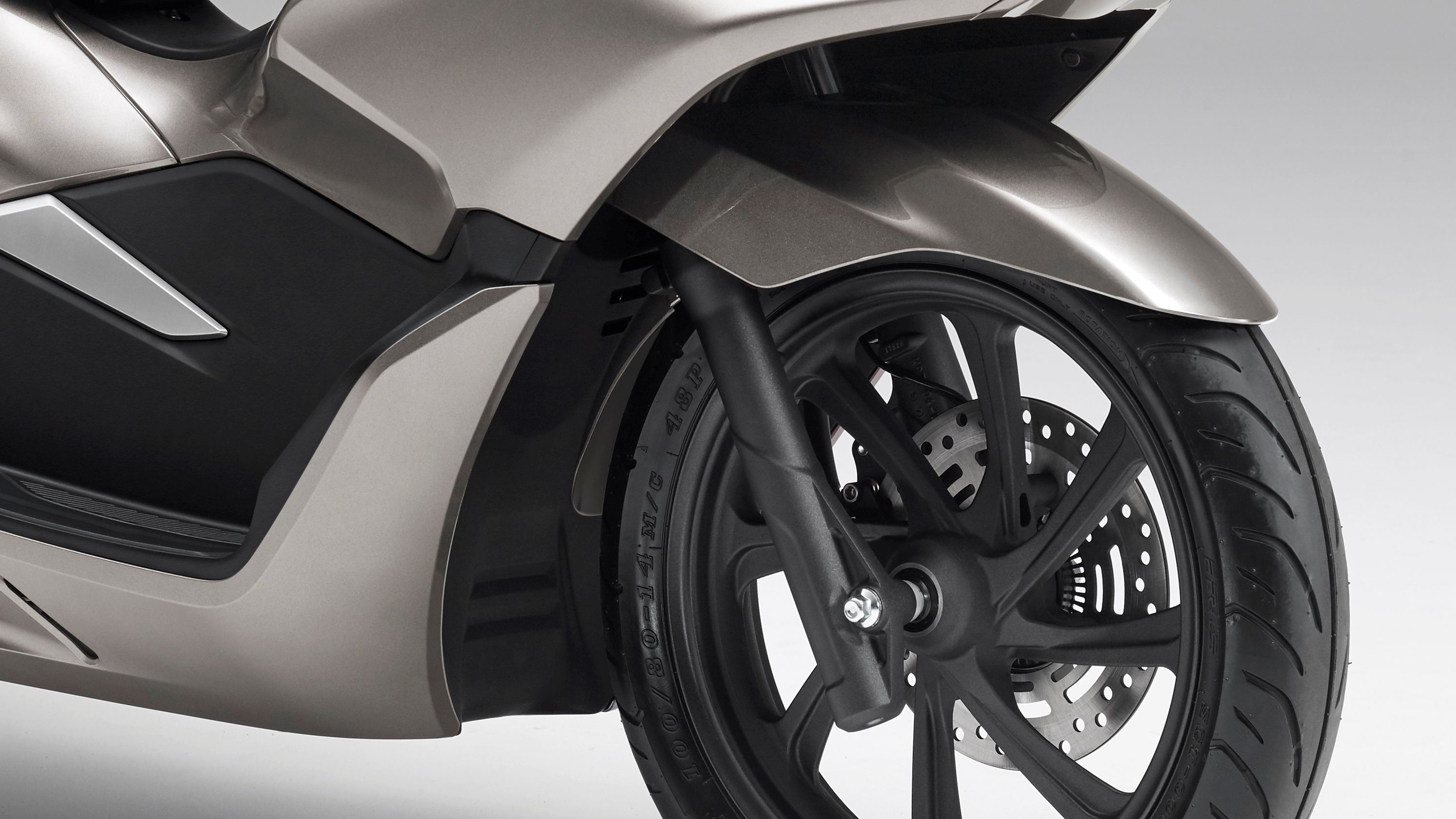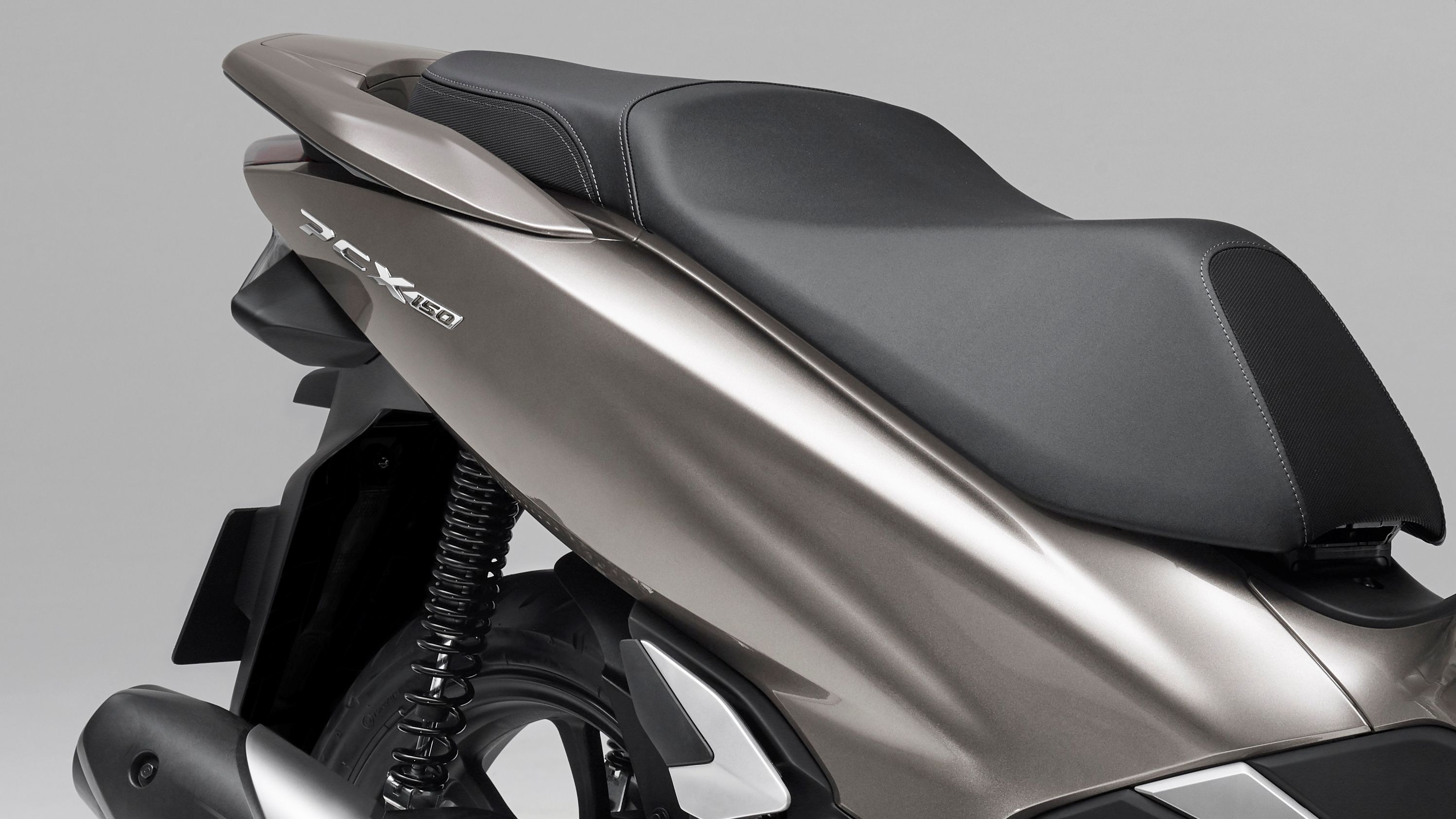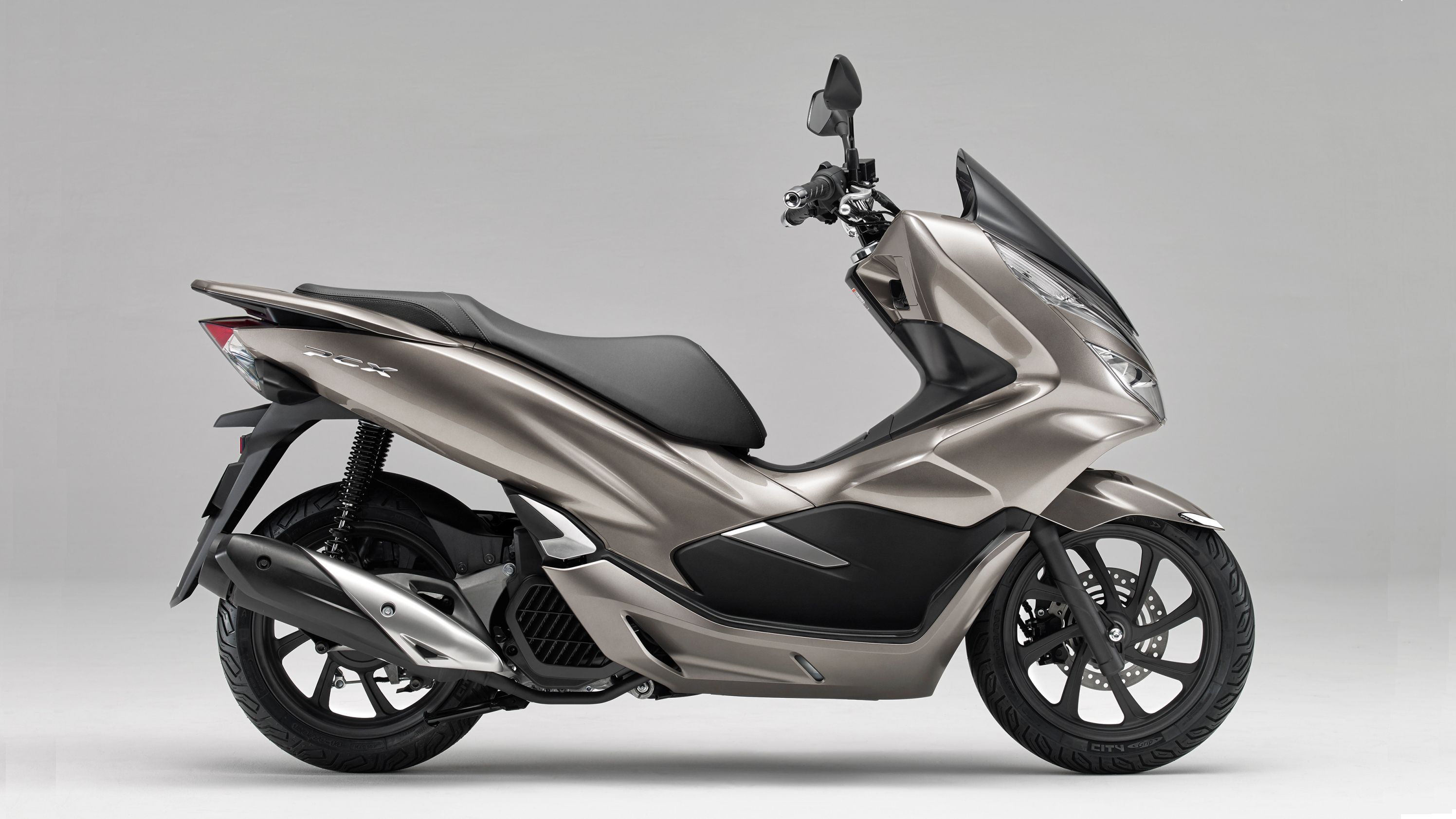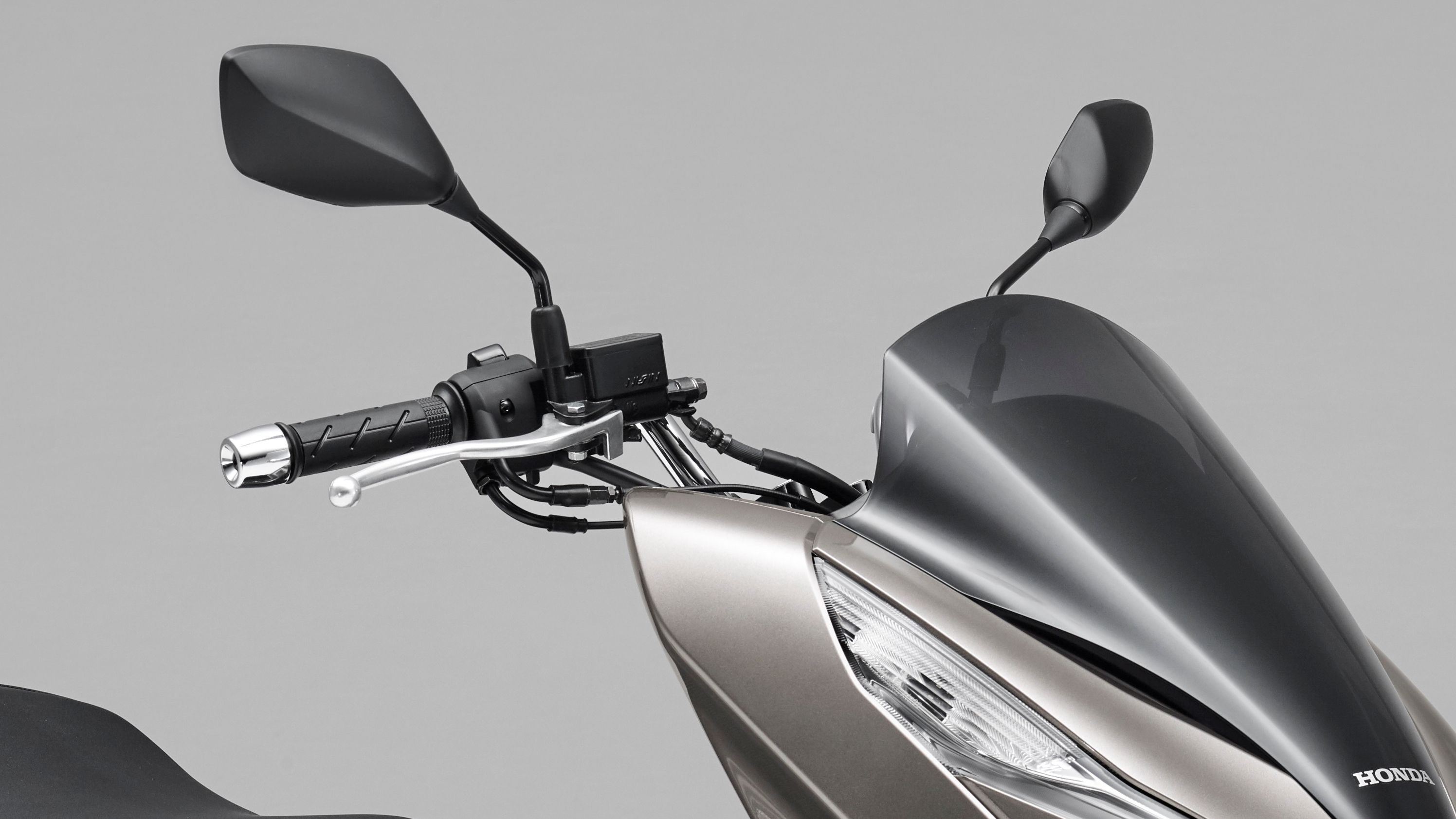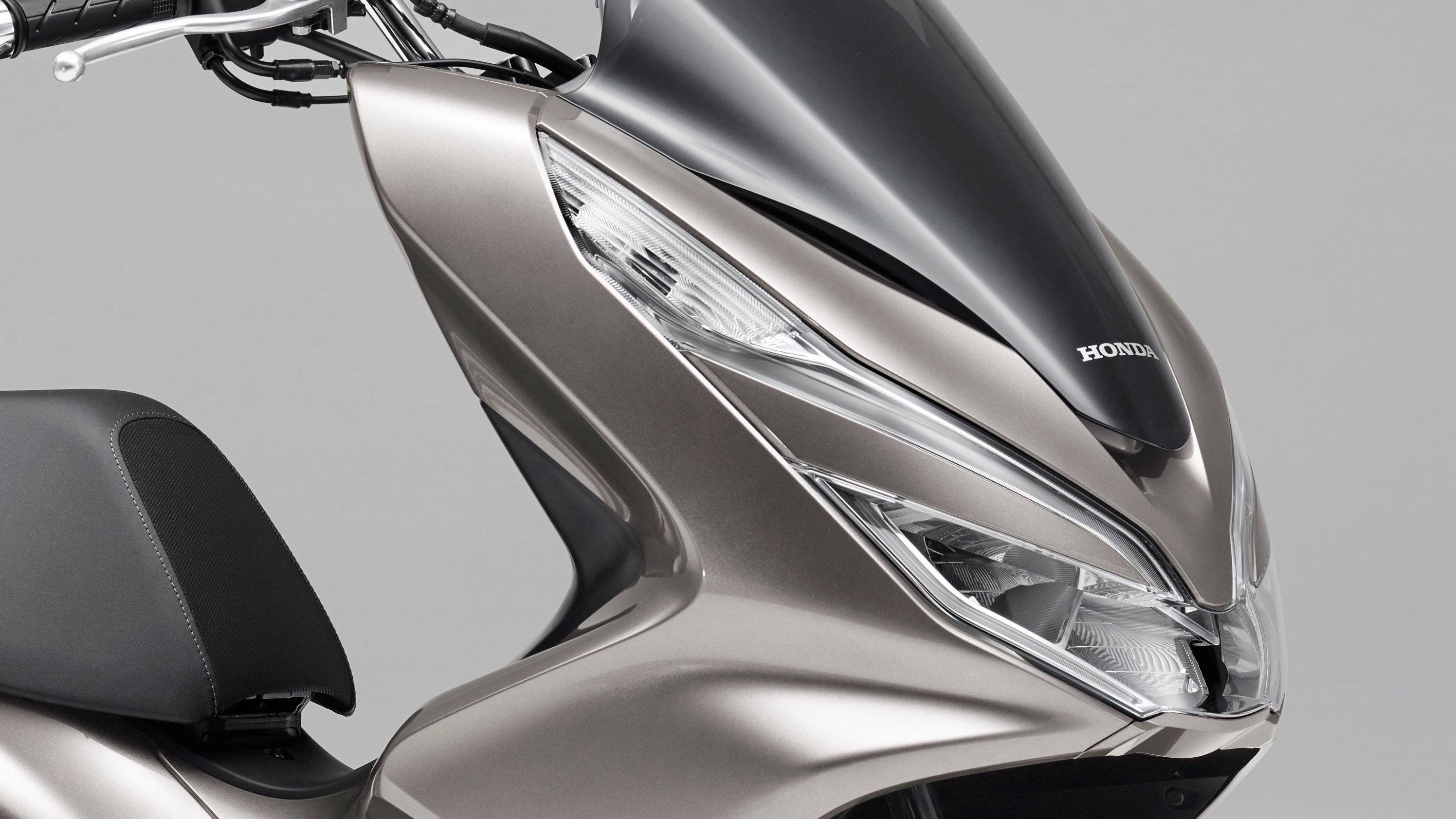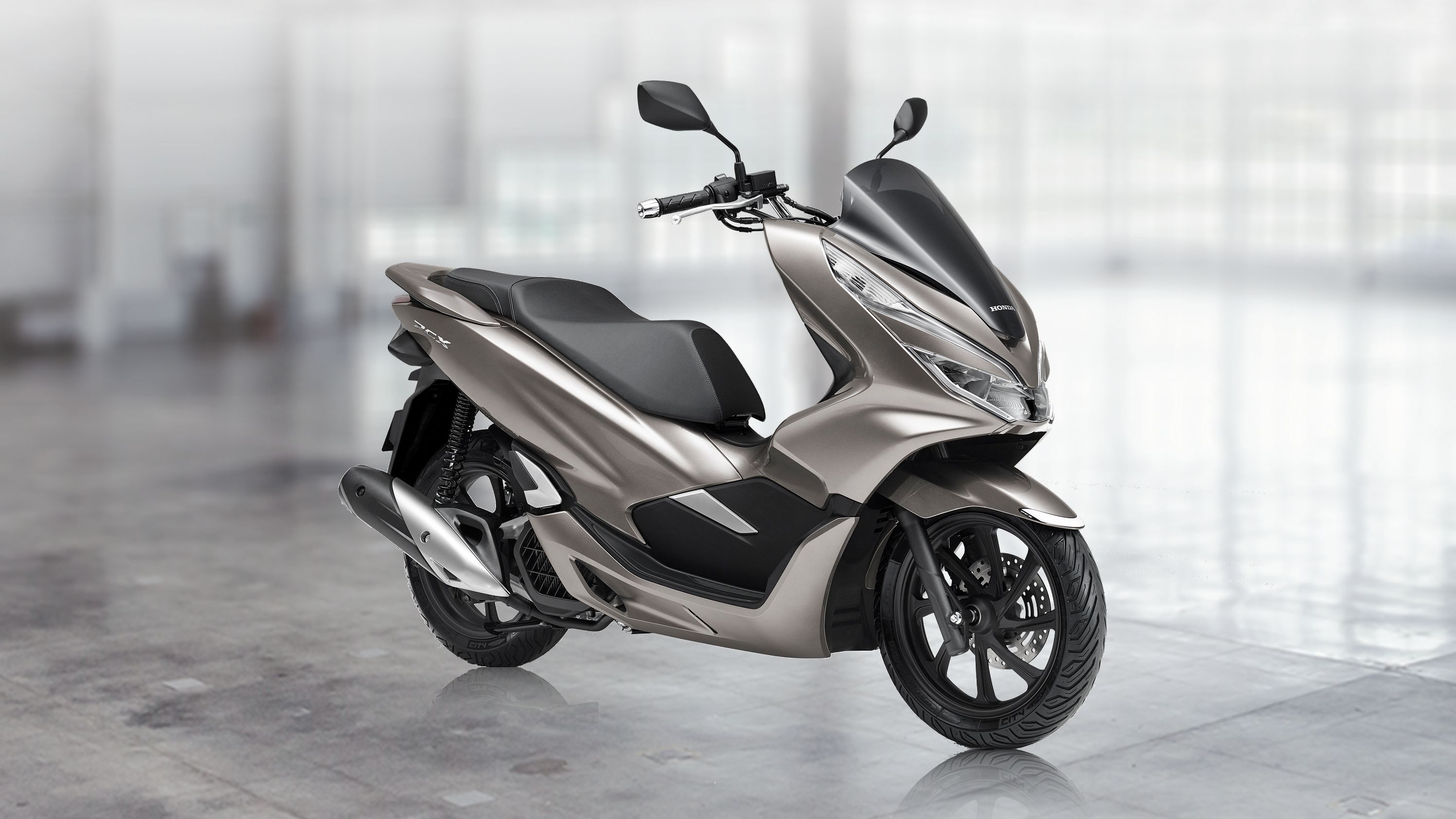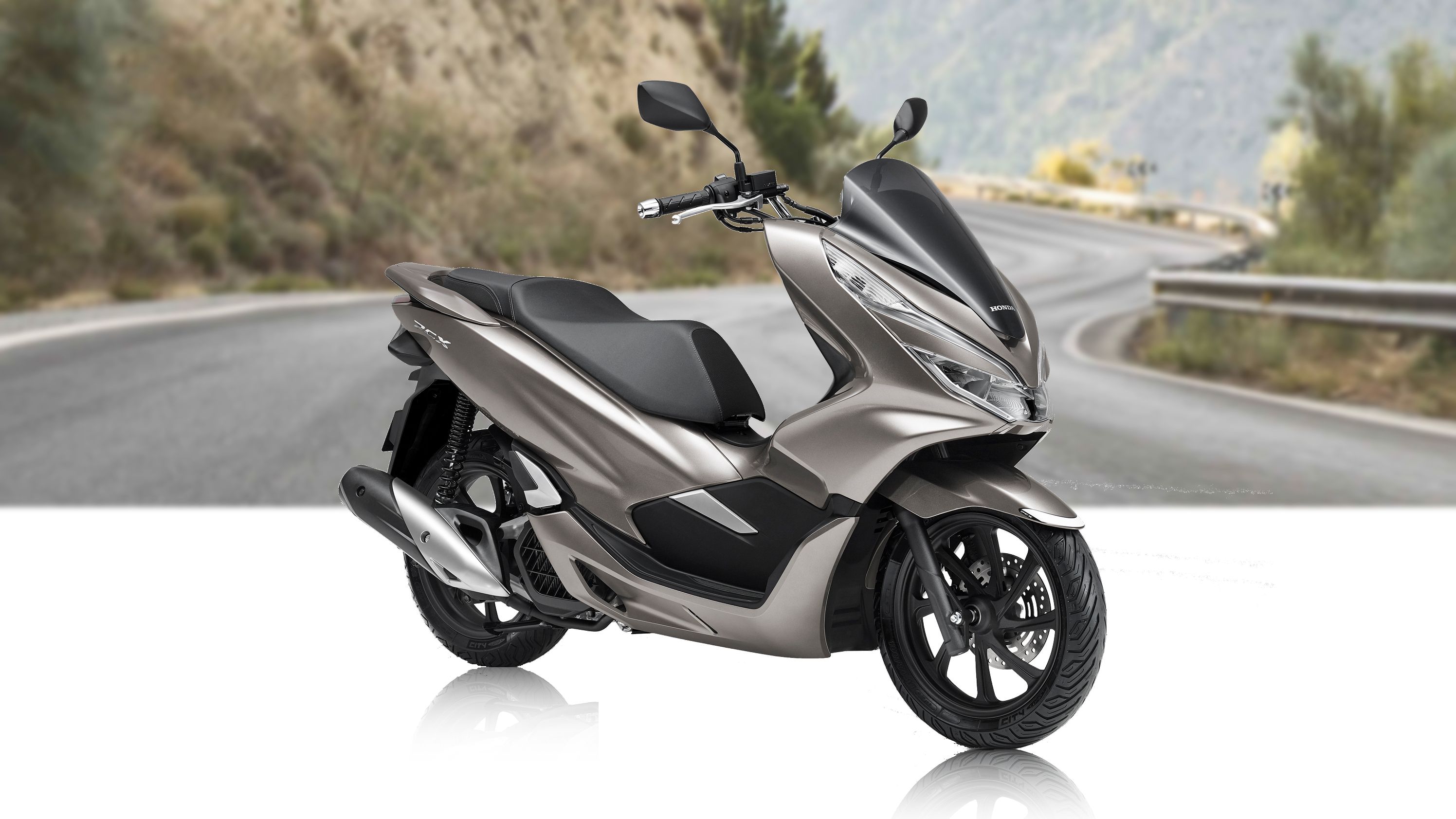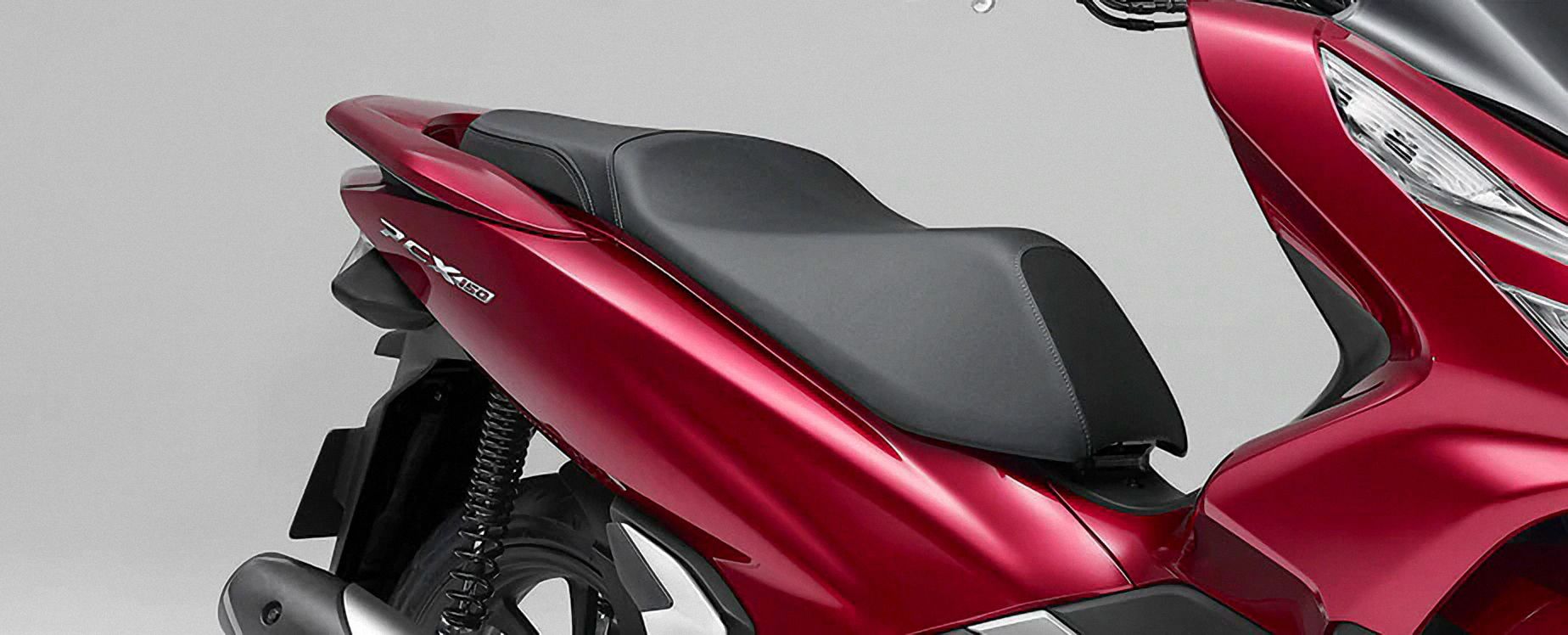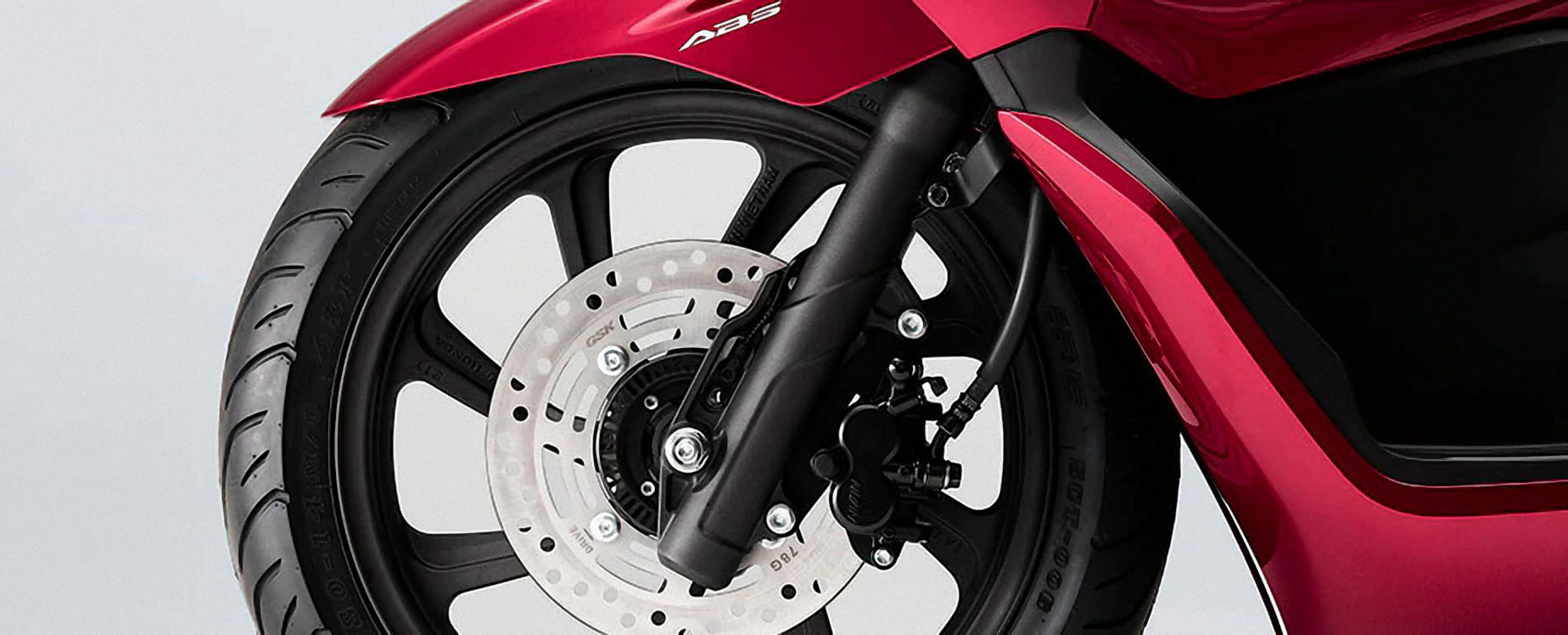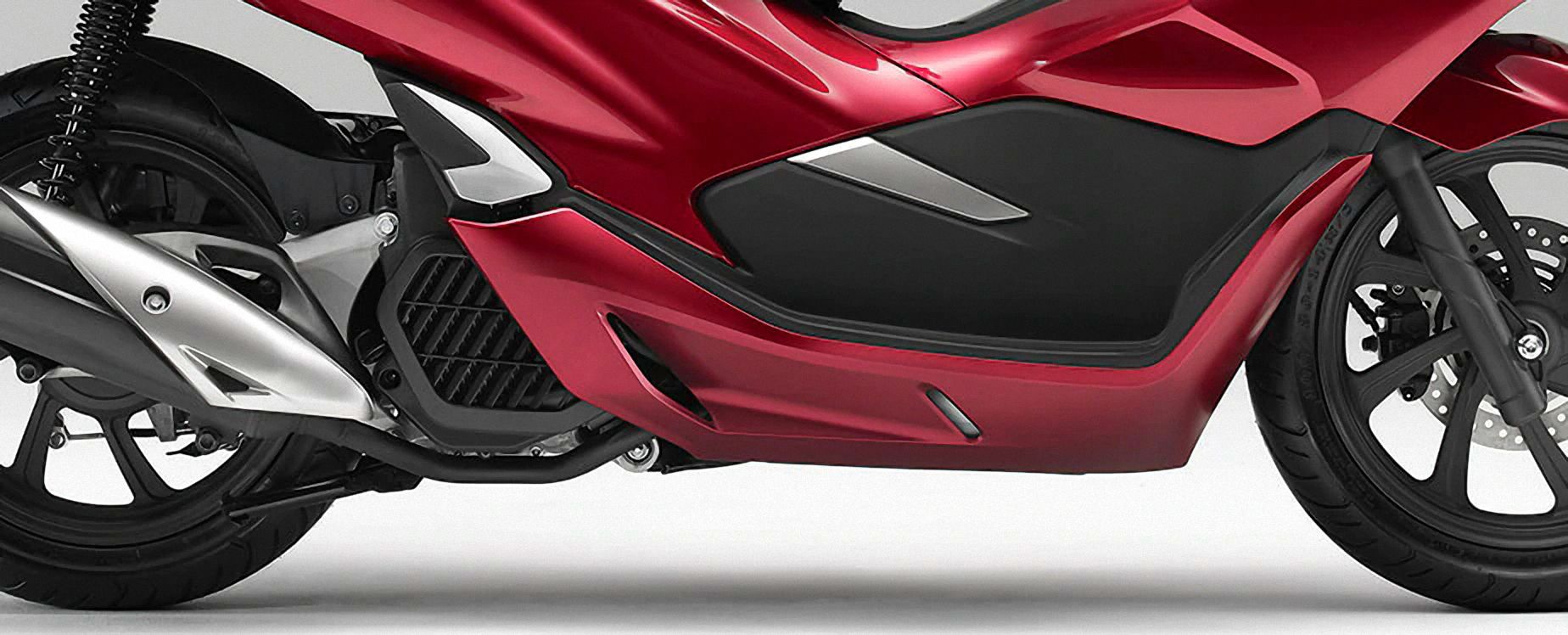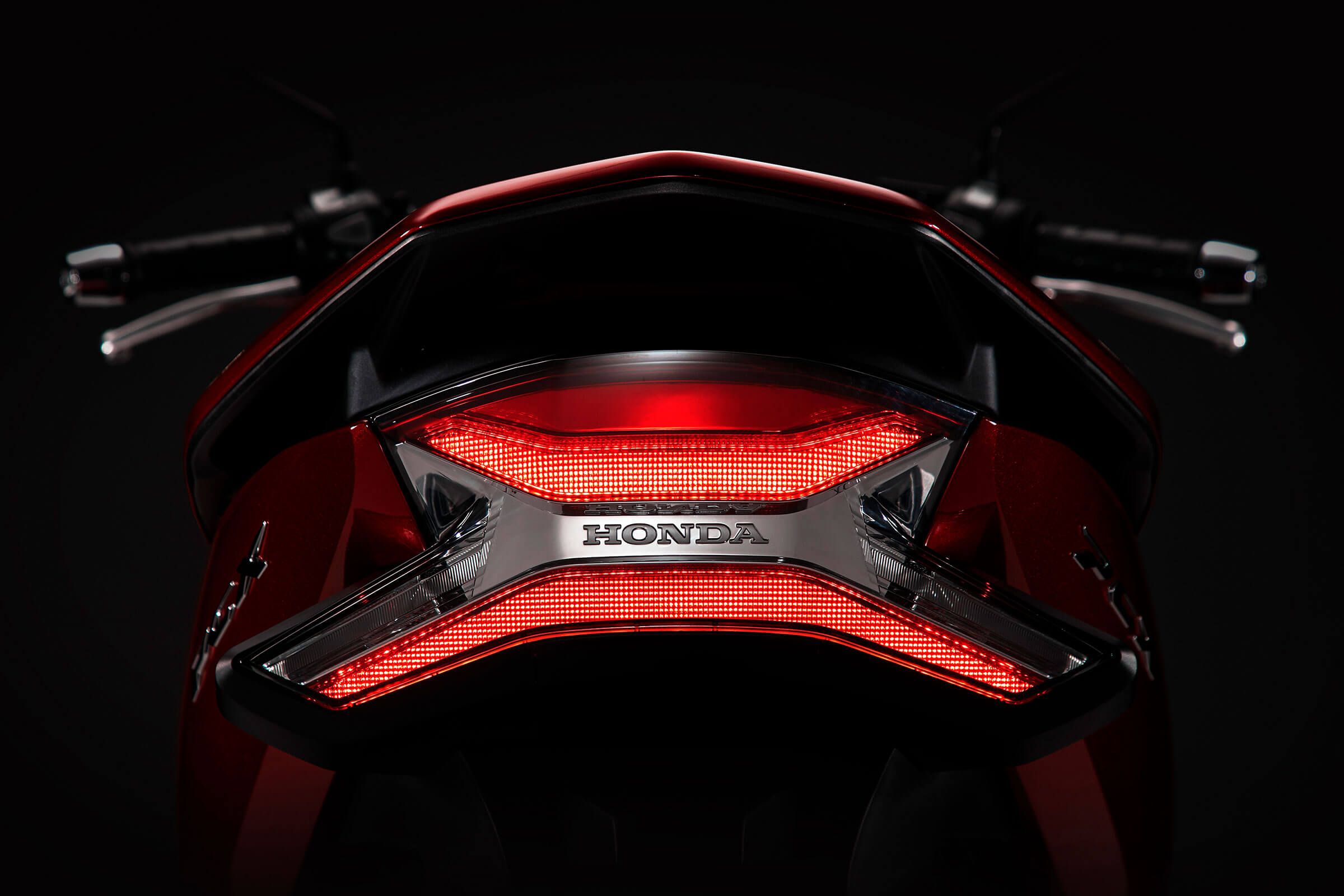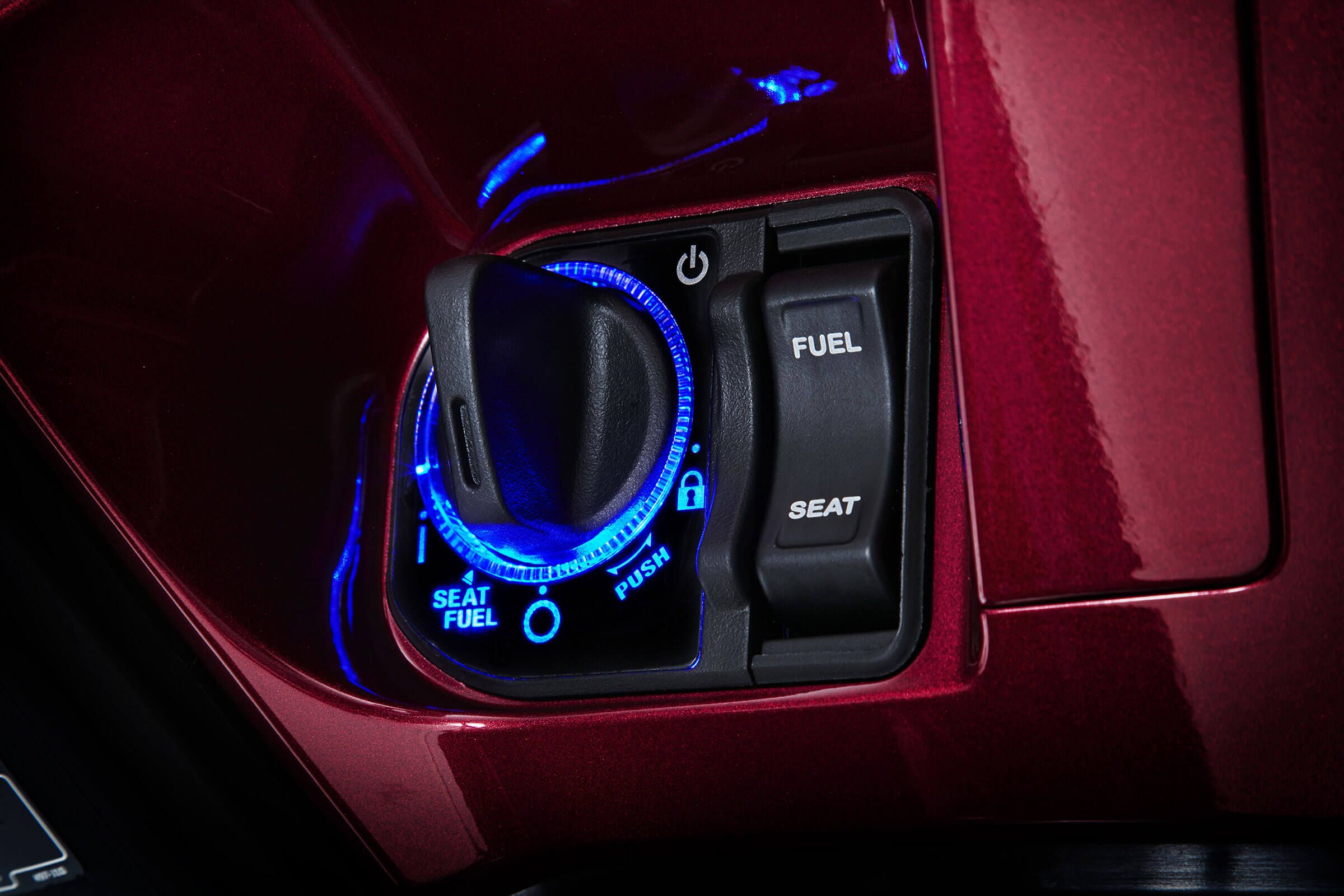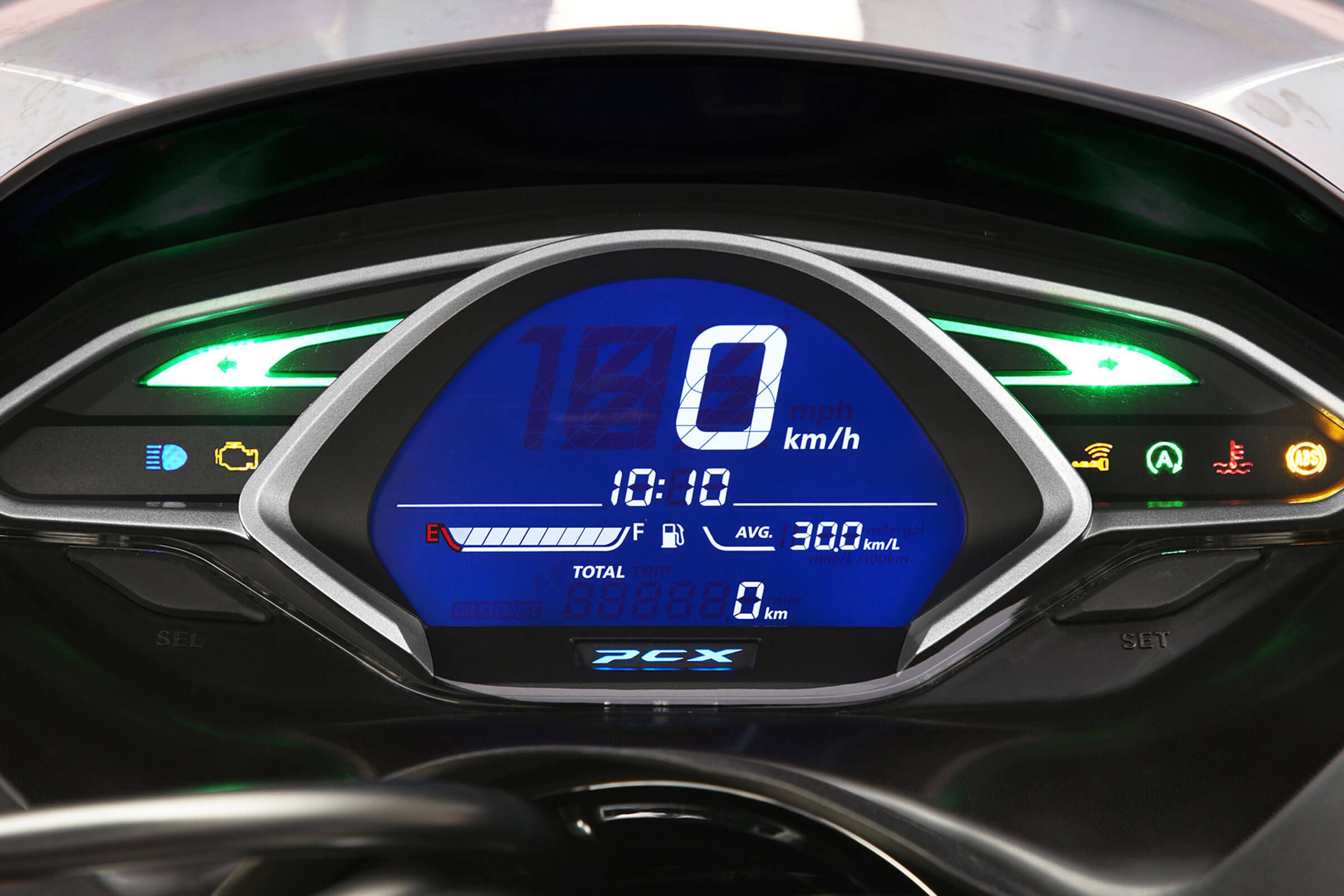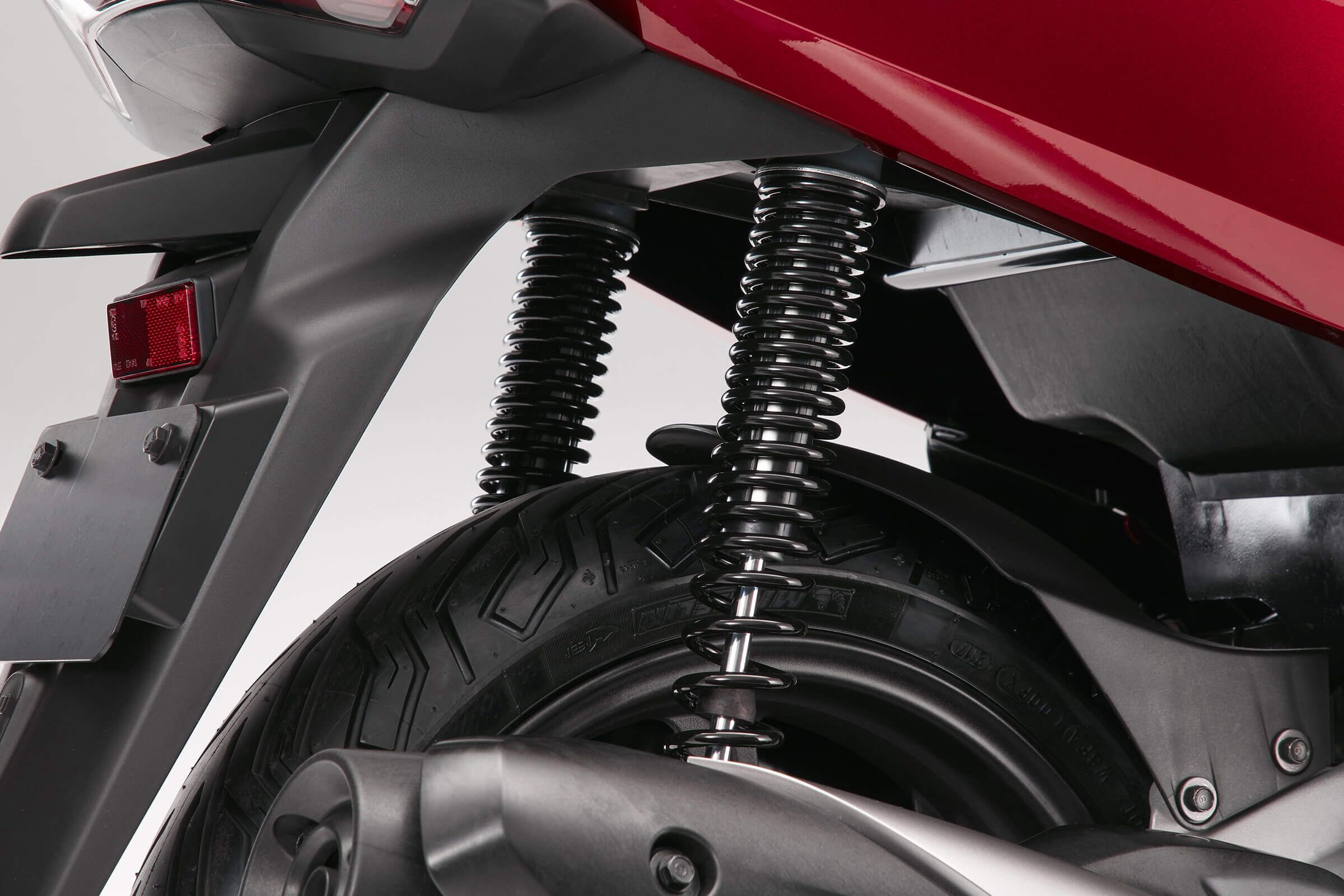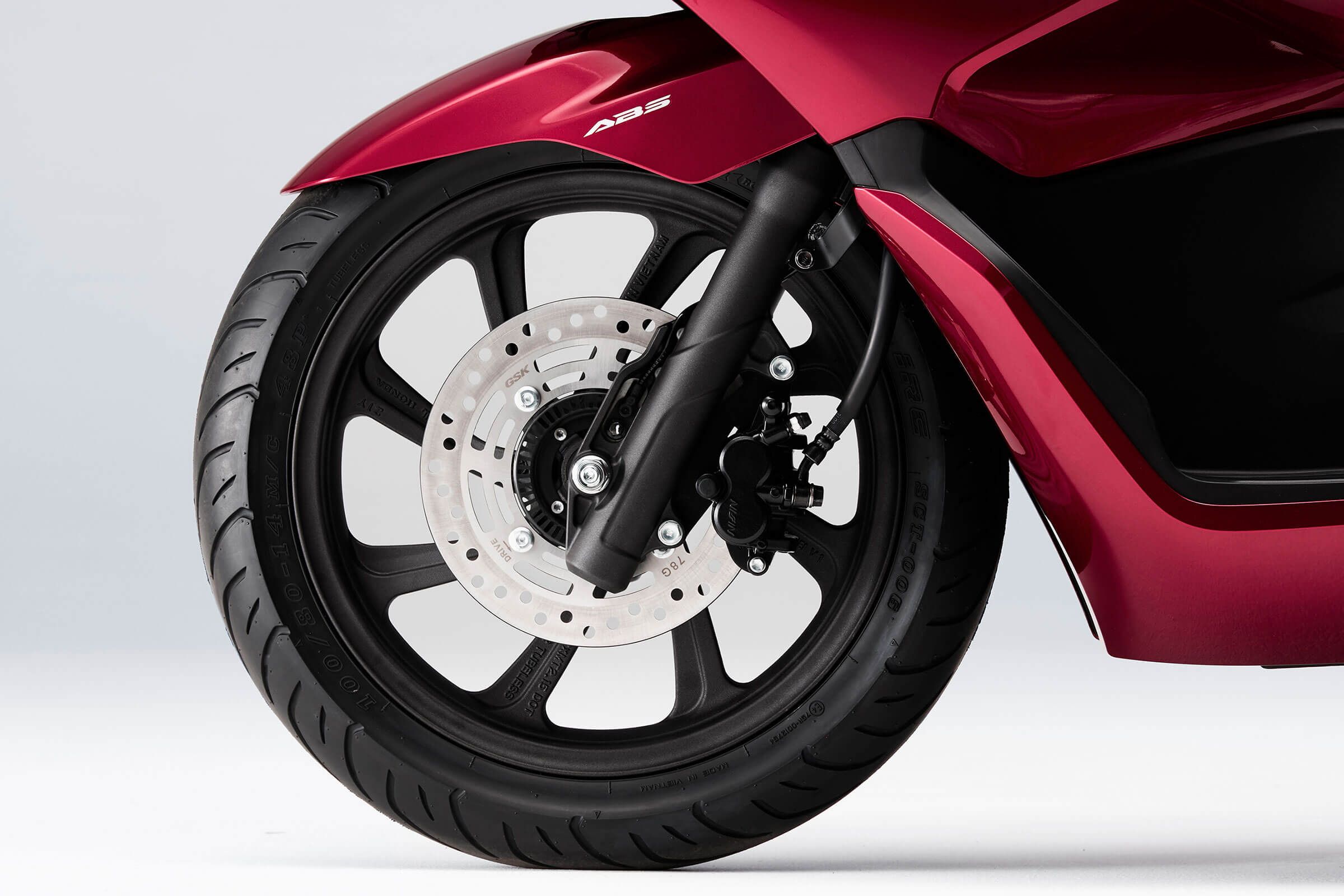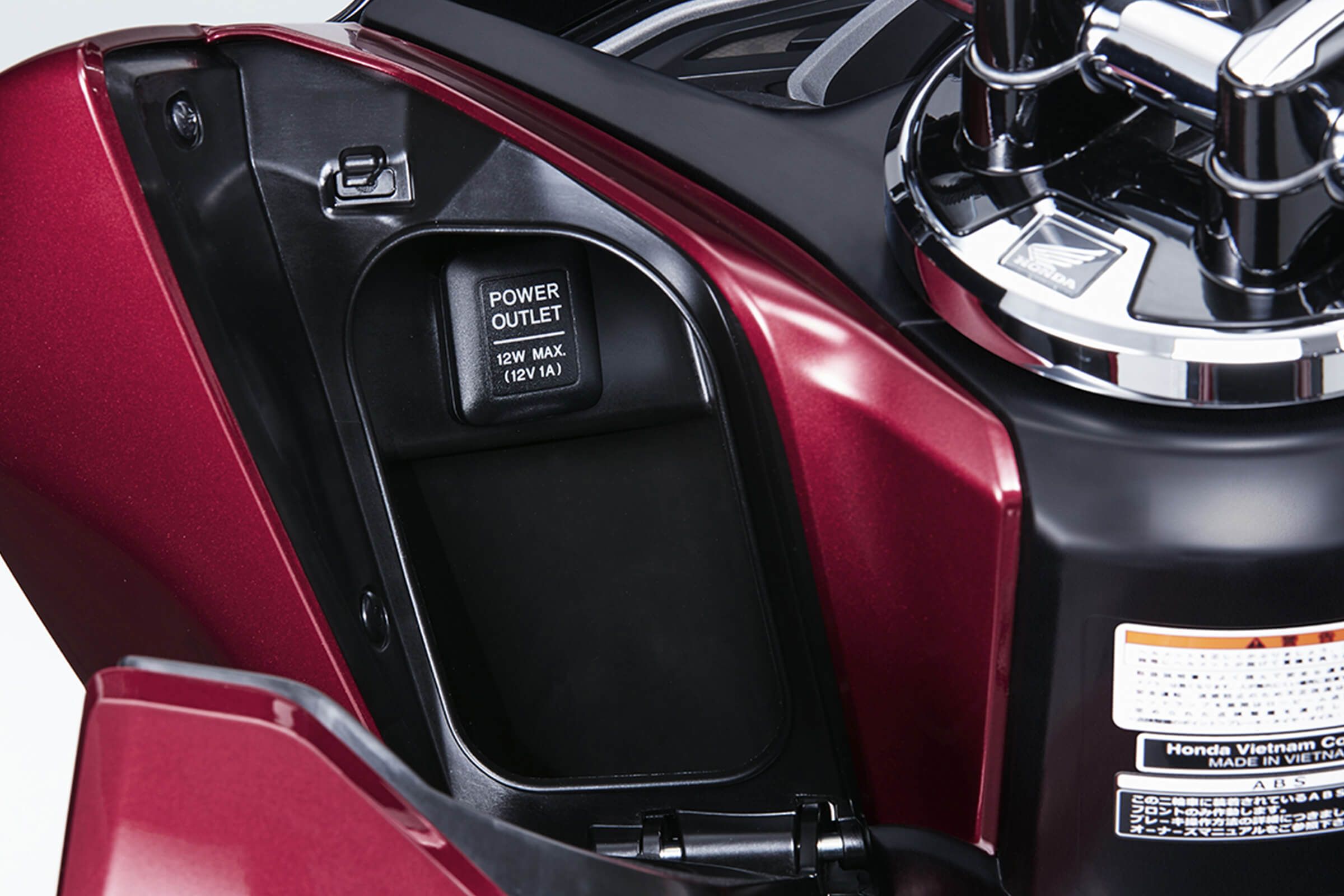Honda's metro-tastic PCX150 scooter was on the receiving end of an upgrade last year. It included a facelift from stem to stern that further polishes its 'luxe metropolitan looks to bring more of the swank and swagger associated with the marque, and it comes paired with a more voluminous underseat storage area to increase its 'commuterability'.
2019 - 2020 Honda PCX150
- Make: Array
- Model: 2019 - 2020 Honda PCX150
- Engine/Motor: single cylinder
- [do not use] Vehicle Model: Array
Honda PCX150 Design
Looking for affordable transportation that doesn't look like an Italian ride from the sixties or something you'd see on a carousel at Disneyland? The PCX150 has it covered with its modern looks that start out with the stylish front fairing that flows into the rest of the design with a grace usually reserved for top-shelf streetbikes and sport-tourers. Molded-in split headlights ride with recessed turn signals up on the wind wings for a smooth entry, and a vented windshield provides protection for the rider with a smoothness all its own that prevents excessive head-buffet action and wind noise; just the thing for a low-fatigue commute.
The step-through is more of a goose step-through with only a slight cutaway between bars and bench, so if you're looking for a scooter 'cause you can't hike your leg to mount, it's time to look elsewhere. The tunnels flows into the underseat storage area that boasts enough room to carry a full-face helmet, even a great big honkin' modular bucket like I wear will fit in there, and with the helmet out there is plenty of room for your bookbag or some groceries.
Look at the 2019 and 2018 side-by-side and you'll see that while the major design features are similar, numerous tweaks to the body panels give it a different overall look. It's subtle, no doubt, but sometimes a little nip and tuck can work wonders. LED emitters replace the bulbs all around for greater visibility/safety, and that's great and fine, but the artistic expression they allow can be lot of fun as evidenced by the “X” shape of the taillight. Still waiting for a blue-dot conversion for the brake light though, just sayin'. In a final bid to make it as user-friendly as possible, it comes with a 12-volt outlet for your mobile-device powering/charging needs.
Honda PCX150 Chassis
The PCX150 starts out on a steel duplex frame that contributes to its six-pound weight loss from the previous generation. It pushes the seat height up a bit to 30.1 inches off the ground and allows the rear suspension to be moved back for a longer stroke. Upgraded and stiffer tri-rate springs support the rear end and dampen the motion of the swing-mount drive system, and the suspension gets a little more help from the lightened 14-inch wheels that help reduce unsprung weight. A set of 31 mm forks support the front on 2.42 inches of travel with 3.33 inches of travel from the dual rear shocks.
Speaking of shocks; I'm a little shocked that Honda still clings to the rear drum brake clings to the rear drum brake}}. C'mon guys, it's the 21st century, and lack of a rear disc in this day and age is almost as bad as Harley-Davidson's's lack of traction control, but at least they're finally remedying that. The 220 mm front disc takes care of business by doing the bulk of the work with ABS backup for a bit of extra safety. Tire size was boosted with a 100/80 up front and 120/70 in back -- up from 90/90 and 100/90 -- and those big hoops improve handling even more.
|
Rake (Caster Angle): |
27º |
|
Trail : |
3.3 in. |
|
Front Suspension/ Travel: |
31mm telescopic fork/ 2.42 in. travel |
|
Rear Suspension/ Travel: |
Twin shocks/ 3.33 in. travel |
|
Front Brakes: |
Hydraulic w/ single 220 mm disc and CBS (ABS Model: w/ ABS) |
|
Rear Brakes: |
Mechanical w/ single 130 mm drum and CBS (ABS Model: w/ ABS) |
|
Tires, Front/ Rear: |
100/80-14/ 120/70-14 |
Honda PCX150 Drivetrain
The factory claims the mill grinds out more top-end power with no drop in torque on the PCX150. For comparison, the previous year's model claimed 13.3 horsepower at 8,500 rpm and 10.3 pounds o' grunt at five grand. Taking it at face value, the new PCX150 rolls with more power and less weight, so you can expect it to be even more fun to ride.
You may be surprised to learn that even though it produces more power, it actually leaves 4 cc on the table for a total of 149 cc, down from 153 cc. That's progress, folks. Emissions were slashed as well, and the cylinder design runs with spines that reach into the jug to help stabilize the bore and reduce blowby and the concurrent power losses that come along with it.
Water cooling deals with the waste heat, and in another improvement, the on-board fan was both reduced in size and increased in efficiency to deal with the extra BTUs. Naturally, a CVT unit provides twist-and-go operation for shiftless rpm management and effortless rides.
|
Engine: |
149cc liquid-cooled 80º single-cylinder four-stroke |
|
Valve Train: |
SOHC; two valves |
|
Bore x Stroke: |
57.3 mm x 57.9 mm |
|
Compression Ratio: |
10.6:1 |
|
Induction: |
Fuel injection; 26 mm throttle body |
|
Ignition: |
Full transistorized |
|
Starter: |
Electric |
|
Transmission: |
V-Matic |
|
Clutch: |
Automatic centrifugal dry type |
|
Final Drive: |
Belt |
Honda PCX150 Pricing
There were a number of considerable improvements on the PCX150, but the factory only tacked a single Benjamin onto the tally last year. The price holds steady for 2020 at $3,699, and if you fancy the ABS feature new in 2019, you'll have to shuck out another three bills for the $3,999 sticker.
|
Color: |
|
|
└ 2019: |
Bright Bronze Metallic |
|
└ 2020: |
Candy Luster Red |
|
Price: |
$3,699 (w/ ABS: $3,999) |
Honda PCX150 Competitors
Mini-max scooters are still rather niche, but the name that's been in the back of my mind since I first looked at the new PCX150 has been the Burgman. That's right, Suzuki's Burgman 200 fits right into the same genre, and is one of the most popular and recognized within that slice of the market.
Suzuki Burgman
The Burgman shows an almost effortless class and sophistication that appeals to young and old alike with a less-is-more approach that shuns the dramatic bodywork on the PCX in favor of a more Spartan approach. The Burgman also sports something closer to a proper step-through for easier mounting, and shares a deep saddle with the PCX to put the rider in the scoot.
The bones are predictably similar with dual coil-over shocks out back and rwu hydraulic forks to lead the way. One big difference is to be found in the brakes; specifically the Burgman's rear brake that runs with a hydraulic disc rather than the antiquated drum brake on back of the Honda. Not only does this modernize the ride, but it allows both ends of the scooter to benefit from the ABS feature, rather than just the front wheel.
Suzuki uses a 200 cc mill to push the Burgman with fuel injection, the Suzuki Idle Speed Control system, and catalysts in the exhaust to meet emissions requirements. It also comes with an idiot-light to help you tailor your riding style to maximize efficiency. Honda leaves a few cubes on the table, and it comes off as a slightly simpler machine as it has no answer to Suzuki's electronic wizardry.
The slightly larger engine and handful of electronic gizzies will cost you to the tune of $4,999, thus putting the Burgman a full grand more expensive than the PCX150 ABS. That's a significant amount of cheddar, and will make a difference to buyers on a budget.
Read our full review of the Suzuki Burgman.
He Said
“I can't decide if the PCX is trying too hard to look like a proper luxury scooter, or if it should be commended for bringing some class to the entry-level market. To be honest, it's almost too much for such an inexpensive ride, but should appeal to riders looking for a grown-up scooter.”
She Said
My wife and fellow motorcycle writer, Allyn Hinton, says, “I liked the PCX150 well enough before, but I'm digging the new model even more. The design changes, however subtle, do add up to a more stylish look, and who can argue with less weight/more power? The larger tires improve handling and the cushier ride increases comfort. I like the larger storage capacity and they're offering ABS now. It's a shame it isn't ABS for front and rear. C'mon Honda. Drop the drum brake already.”
Honda PCX150 Specifications
|
Engine & Drivetrain: |
|
|
Engine: |
149 cc liquid-cooled 80º single-cylinder four-stroke |
|
Valve Train: |
SOHC; two valves |
|
Bore x Stroke: |
57.3 mm x 57.9 mm |
|
Compression Ratio: |
10.6:1 |
|
Induction: |
Fuel injection; 26 mm throttle body |
|
Ignition: |
Full transistorized |
|
Starter: |
Electric |
|
Transmission: |
V-Matic |
|
Clutch: |
Automatic centrifugal dry type |
|
Final Drive: |
Belt |
|
Chassis: |
|
|
Rake (Caster Angle): |
27º |
|
Trail: |
3.3 in. |
|
Front Suspension/ Travel: |
31mm telescopic fork/ 2.42 in. |
|
Rear Suspension/ Travel: |
Twin shocks/ 3.33 in. |
|
Front Brakes: |
Hydraulic w/ single 220 mm disc and CBS (ABS Model: w/ ABS) |
|
Rear Brakes: |
Mechanical w/ single 130 mm drum and CBS (ABS Model: w/ ABS) |
|
Tires, Front/ Rear: |
100/80-14/ 120/70-14 |
|
Dimensions & Capacities: |
|
|
Length: |
75.8 in. |
|
Width: |
29.3 in. |
|
Height: |
43.5 in. |
|
Seat Height: |
30.1 mm |
|
Ground Clearance: |
5.3 in. |
|
Wheelbase: |
51.8 in. |
|
Fuel Capacity: |
2.1 gal. |
|
Curb Weight: |
289 lbs. |
|
Top Speed: |
70 mph (governed) |
|
Details: |
|
|
Color: |
|
|
└ 2019: |
Bright Bronze Metallic |
|
└ 2020: |
Candy Luster Red |
|
Price: |
$3,699 (w/ ABS: $3,999) |
Further Reading
Honda
Read more Honda news.

